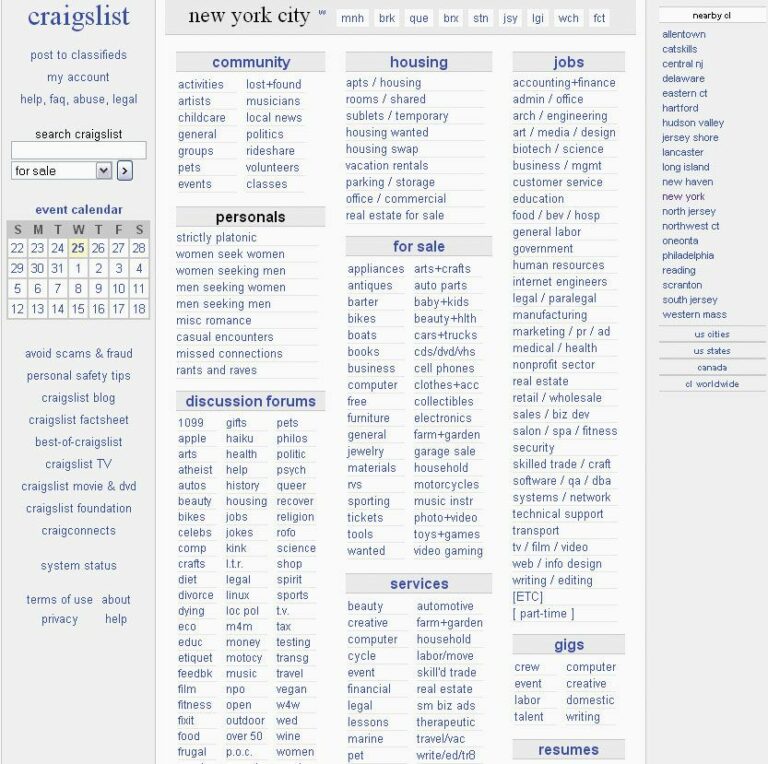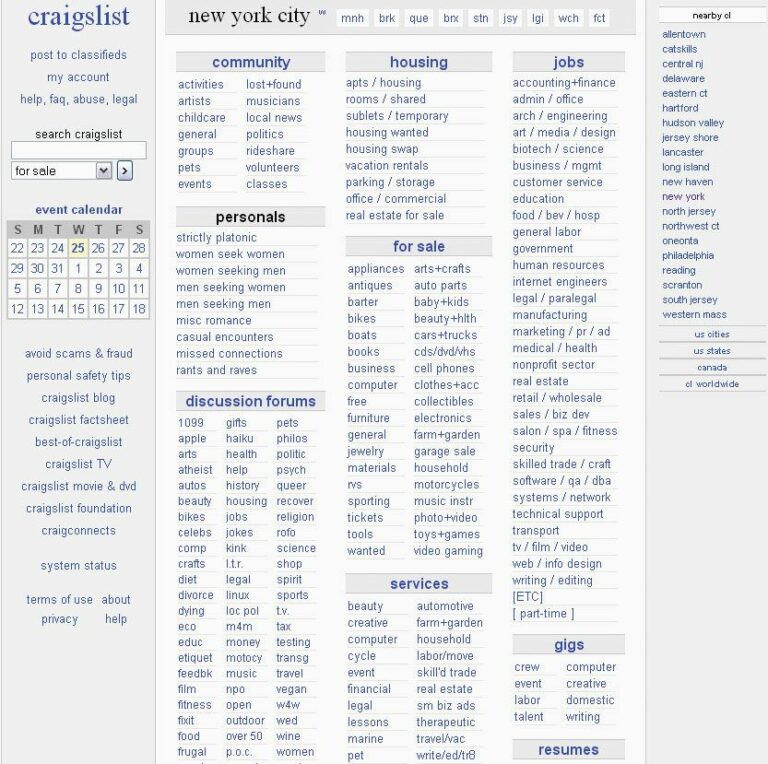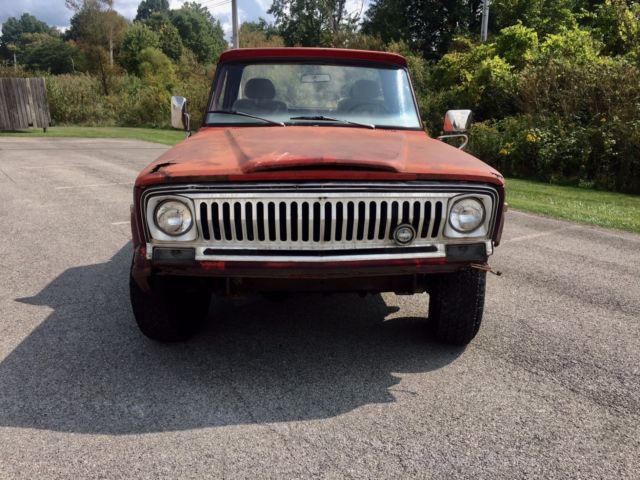Used Farrier Rigs For Sale
“Used Farrier Rigs For Sale: A Comprehensive Guide to Finding the Right Setup Typestruckssale.com
The life of a farrier is demanding. It requires not only skill and knowledge of equine anatomy and hoof care but also a reliable and well-equipped mobile workshop. A "farrier rig" is essentially that – a portable setup, typically mounted on a truck, trailer, or van, designed to house all the necessary tools, equipment, and supplies a farrier needs to perform their work efficiently and safely on the road. Purchasing a new farrier rig can be a significant investment. Fortunately, the used market offers a more accessible entry point for aspiring or established farriers looking to upgrade their current setup or acquire a first rig without breaking the bank. This guide will walk you through everything you need to know about navigating the used farrier rig market, from understanding your needs to inspecting potential purchases and securing a great deal.
Introduction Used Farrier Rigs For Sale: A Comprehensive Guide to Finding the Right Setup
Understanding the Value of a Used Farrier Rig
A well-equipped farrier rig streamlines the farrier’s workflow, allowing for faster, more organized, and ultimately, more profitable work. It protects tools from the elements, provides a secure workspace, and enhances professionalism. Opting for a used rig can significantly reduce the initial investment, freeing up capital for other essential expenses like tools, education, or marketing. However, due diligence is crucial. You’re not just buying a vehicle; you’re buying a mobile workshop, and its condition directly impacts your productivity and safety.
Defining Your Needs: What Are You Looking For?
Before diving into listings, take the time to clearly define your needs. Consider the following factors:
- Work Volume: How many horses do you typically shoe in a week? A larger rig with more storage and workspace might be necessary for a busy farrier.
- Type of Work: Do you specialize in therapeutic shoeing, corrective trimming, or general hoof care? Certain specialties require specific tools and equipment, influencing the type of rig you need.
- Terrain: Will you be primarily working on paved roads or navigating rough terrain? This will influence your choice of vehicle (truck, van, or trailer) and its suspension.
- Budget: Set a realistic budget and stick to it. Remember to factor in potential repair costs and upgrades.
- Storage Requirements: Consider the size and number of tools you need to carry, including your forge, anvil, power tools, horseshoes, and supplies.
- Power Requirements: Determine if you need a generator or inverter to power your tools and equipment.
Answering these questions will help you narrow down your search and focus on rigs that meet your specific requirements.
Types of Used Farrier Rigs
Understanding the different types of rigs available is crucial for making an informed decision:
- Truck Bed Rigs: These are typically mounted on pickup trucks and offer a compact and versatile solution. They can be customized with various storage compartments, shelves, and work surfaces. They are suitable for farriers who travel moderate distances and don’t require a large workspace.
- Trailer Rigs: Trailers offer ample storage space and can be customized to create a complete mobile workshop. They can be pulled by a truck or SUV. They are a good option for farriers who need a lot of equipment or who work in areas with limited parking.
- Van Rigs: Vans provide a fully enclosed and weatherproof workspace. They can be customized with shelving, drawers, and workbenches. They are ideal for farriers who work in all weather conditions and need a secure and organized workspace.
- Enclosed Trailers: Provide a secure and protected environment for all your equipment. They often feature side doors for easy access and can be customized with shelving and workbenches.
- Flatbed Trucks with Custom Boxes: These rigs offer a large and customizable platform for creating a unique mobile workshop. They are often used by farriers who need to carry a lot of equipment or who perform specialized work.
Finding Used Farrier Rigs For Sale
Several avenues can be explored when searching for used farrier rigs:
- Online Marketplaces: Websites like Craigslist, Facebook Marketplace, and eBay often list used farrier rigs. Use specific keywords like "used farrier rig," "farrier truck," or "mobile farrier workshop."
- Farrier Supply Stores: Some farrier supply stores may have bulletin boards or connections with farriers looking to sell their rigs.
- Farrier Associations: Contact local or national farrier associations. They may have members who are selling their equipment.
- Online Forums: Online forums dedicated to farriers often have classifieds sections where rigs are listed for sale.
- Auctions: Equipment auctions, both online and in-person, can sometimes feature used farrier rigs.
Inspecting a Used Farrier Rig: What to Look For
Thorough inspection is critical before making a purchase. Here’s a checklist to guide you:
- Vehicle Condition: Inspect the vehicle’s engine, transmission, brakes, tires, and suspension. Check for rust, leaks, and other signs of wear and tear. Have a mechanic inspect the vehicle if possible.
- Rig Condition: Evaluate the condition of the rig’s components, including shelving, drawers, work surfaces, and lighting. Look for damage, rust, or signs of neglect.
- Forge and Anvil: If the rig includes a forge and anvil, inspect them for cracks, damage, or wear. Ensure the forge is in good working order and the anvil is securely mounted.
- Power System: If the rig has a generator or inverter, test it to ensure it’s functioning properly. Check the wiring and connections for safety.
- Tool Storage: Evaluate the effectiveness and security of the tool storage system. Make sure it can accommodate your tools and equipment safely and efficiently.
- Documentation: Ask for maintenance records, repair invoices, and any other relevant documentation.
- Test Drive: If possible, take the rig for a test drive to assess its handling and performance.
Negotiating the Price and Closing the Deal
Once you’ve found a rig that meets your needs and passed inspection, it’s time to negotiate the price. Research the fair market value of similar rigs to get an idea of what to offer. Be prepared to walk away if the seller is unwilling to negotiate a reasonable price.
When you’ve reached an agreement, ensure you have a written sales agreement that clearly outlines the terms of the sale, including the price, payment method, and date of transfer. Consider having a lawyer review the agreement to protect your interests.
Essential Upgrades and Maintenance
Even after purchasing a used farrier rig, some upgrades and maintenance may be necessary to bring it up to your standards.
- Safety Features: Ensure the rig has adequate safety features, such as fire extinguishers, first-aid kit, and proper ventilation.
- Lighting: Upgrade the lighting to improve visibility, especially when working in low-light conditions.
- Tool Organization: Customize the tool storage system to optimize efficiency and organization.
- Regular Maintenance: Establish a regular maintenance schedule for the vehicle and rig components to prevent breakdowns and extend their lifespan.
Conclusion
Purchasing a used farrier rig can be a cost-effective way to acquire a mobile workshop and enhance your farrier practice. By carefully defining your needs, inspecting potential purchases thoroughly, and negotiating a fair price, you can find a rig that meets your requirements and helps you succeed in your career. Remember to prioritize safety, functionality, and long-term reliability when making your decision. A well-maintained used rig can be a valuable asset for years to come.
Table Price
| Feature | New Rig Estimate | Used Rig Estimate | Notes |
|---|---|---|---|
| Truck Bed Rig | $10,000 – $30,000 | $3,000 – $15,000 | Depends heavily on truck condition and build quality of the rig. |
| Trailer Rig | $15,000 – $40,000 | $5,000 – $25,000 | Consider the condition of the trailer itself and any custom build-outs. |
| Van Rig | $20,000 – $50,000+ | $7,000 – $30,000 | Van mileage and rust are key factors. Interior setup can vary greatly. |
| Enclosed Trailers | $8,000 – $25,000 | $3,000 – $15,000 | Size and condition are primary cost drivers. Customization will impact price. |
| Flatbed Trucks with Custom Boxes | $30,000 – $75,000+ | $10,000 – $40,000+ | The most expensive option. Customization and truck condition significantly influence the price. |
| Forge (Propane) | $800 – $2,000 | $300 – $1,000 | Check for cracks and burner functionality. |
| Anvil (100lb+) | $500 – $1,500 | $200 – $800 | Check for horn condition and overall wear. |
| Power Inverter/Generator | $500 – $2,000 | $200 – $1,000 | Consider wattage needs for your tools. |
| Total Rig (Complete) | $25,000 – $80,000+ | $8,000 – $40,000+ | Includes vehicle, rig, forge, anvil, and essential equipment. Prices are highly variable based on condition and features. |
Note: These are estimates and actual prices may vary depending on location, condition, and features.
Frequently Asked Questions (FAQ)
Q: What is the most important thing to look for when buying a used farrier rig?
A: The overall condition of the vehicle and the rig itself. Rust, mechanical issues, and damage to the rig’s components can lead to costly repairs down the road.
Q: Should I buy a used rig with a forge and anvil already included?
A: It depends. If the forge and anvil are in good condition and meet your needs, it can be a convenient and cost-effective option. However, thoroughly inspect the forge for safety and the anvil for usability.
Q: How can I ensure the rig is safe to operate?
A: Have a qualified mechanic inspect the vehicle’s mechanical systems. Check the rig’s wiring, lighting, and storage compartments for safety hazards. Ensure you have a fire extinguisher and first-aid kit readily available.
Q: What are some essential tools I should have in my farrier rig?
A: A well-equipped rig should include a forge, anvil, hoof nippers, hoof knives, rasps, hammers, tongs, horseshoes, nails, and a variety of other tools and supplies specific to your practice.
Q: Is it better to buy a used truck and build my own rig, or buy a complete used rig?
A: It depends on your budget, skills, and time. Building your own rig allows for customization but requires more time and effort. Buying a complete used rig is faster and easier but may require some modifications to suit your needs.
Q: What are the ongoing maintenance costs associated with a farrier rig?
A: Maintenance costs include vehicle maintenance (oil changes, tire rotations, brake repairs), rig maintenance (repairs to shelving, drawers, and lighting), and fuel costs. Budget accordingly for these expenses.
Q: Where can I find financing for a used farrier rig?
A: Contact your bank, credit union, or a specialized equipment financing company. Be prepared to provide financial statements and a business plan.
Q: What kind of insurance do I need for a farrier rig?
A: You’ll need commercial auto insurance to cover the vehicle and liability insurance to protect you from potential claims related to your farrier work. Consult with an insurance agent to determine the appropriate coverage for your specific needs.


